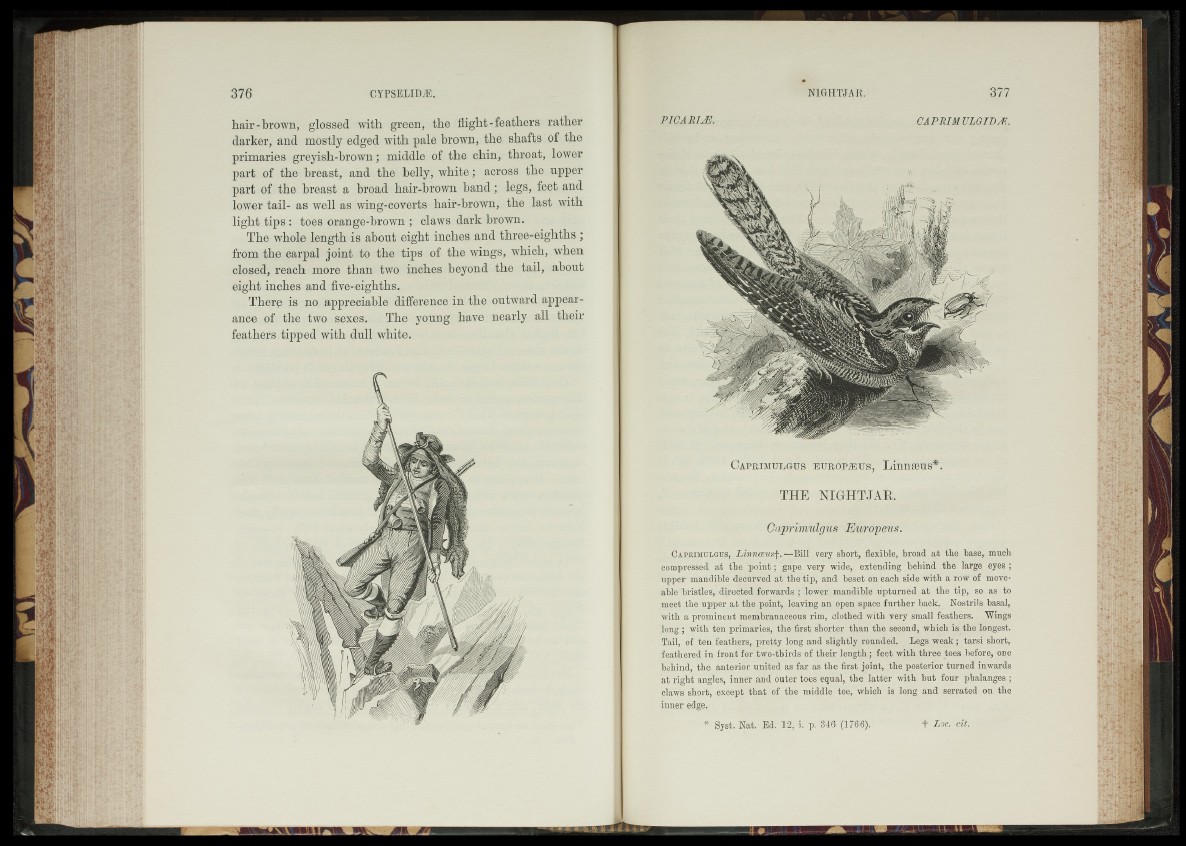
hair-brown, glossed with green, the flight - feathers rather
darker, and mostly edged with pale brown, the shafts of the
primaries greyish-brown; middle of the chin, throat, lower
part of the breast, and the belly, white; across the upper
part of the breast a broad hair-brown band; legs, feet and
lower tail- as well as wing-coverts hair-brown, the last with
light tips : toes orange-brown ; claws dark brown.
The whole length is about eight inches and three-eighths ;
from the carpal joint to the tips of the wings, which, when
closed, reach more than two inches beyond the tail, about
eight inches and five-eighths.
There is no appreciable difference in the outward appearance
of the two sexes. The young have nearly all their
feathers tipped with dull white.
PICARIAS. CAPRIMULGIDA?.
C a pr im u lg u s e u r o p ^ u s , Linnaeus*.
THE NIGHTJAR.
Caprimulgus Europeans.
Caprimulgus, Linnwusf.—Bill very short, flexible, broad at the base, much
compressed at the poin t; gape very wide, extending behind the large eyes ;
upper mandible decurved at the tip, and beset on each side with a row of moveable
bristles, directed forwards ; lower mandible upturned at the tip, so as to
meet the upper at the point, leaving an open space further back. Nostrils basal,
with a prominent membranaceous rim, clothed with very small feathers. Wings
long ; with ten primaries, the first shorter than the second, which is the longest.
Tail, of ten feathers, pretty long and slightly rounded. Legs weak; tarsi short,
feathered in front for two-thirds of their length ; feet with three toes before, one
behind, the anterior united as far as the first joint, the posterior turned inwards
at right angles, inner and outer toes equal, the latter with but four phalanges ;
claws short, except that of the middle toe, which is long and serrated on the
inner edge.
* Syst. Nat. Ed. 12, 5. p. 346 (1766). + Loc. cit.